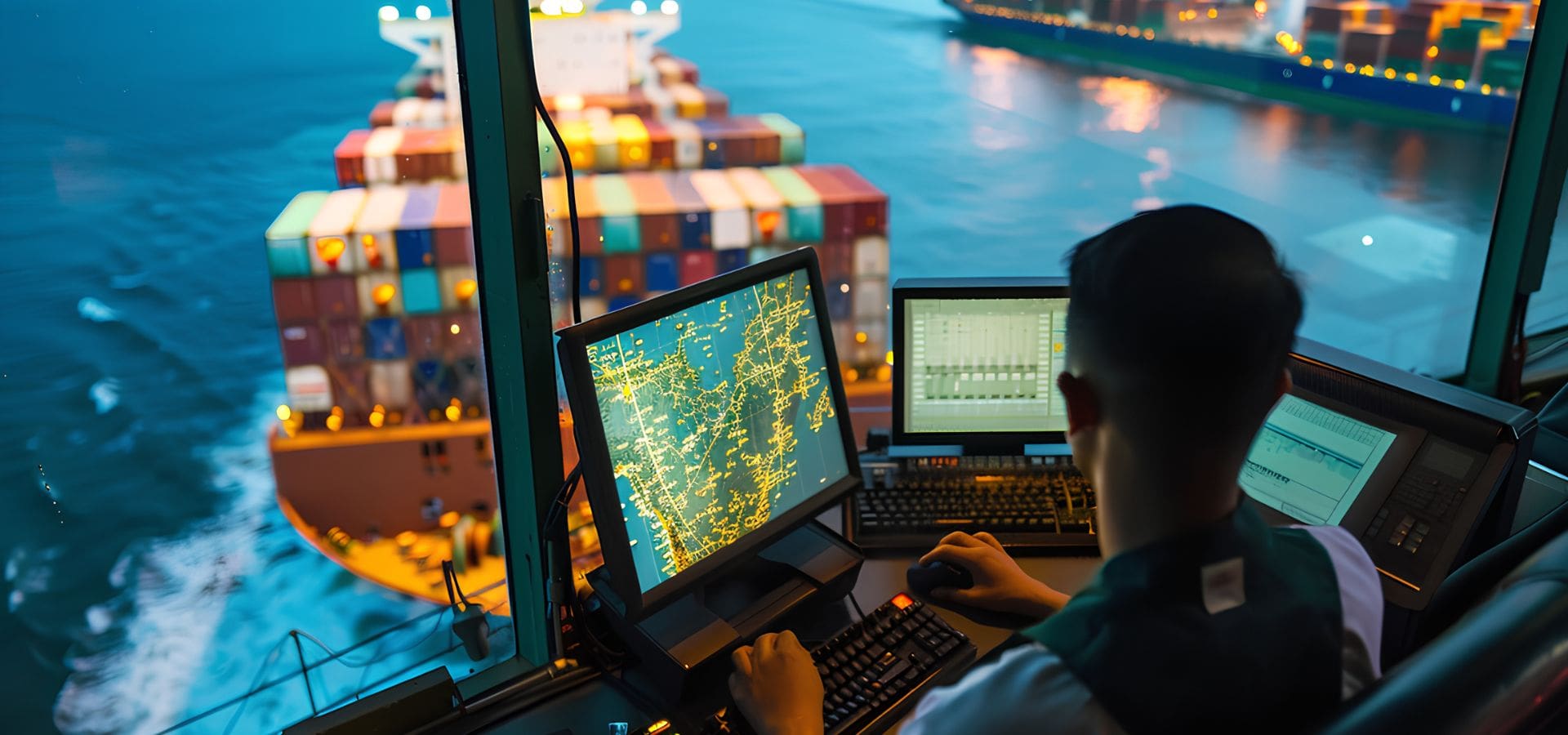Monitoring and optimizing port traffic are fundamental to ensuring operational efficiency and safety in port operations. The use of real-time visualization tools, such as those offered by the Port Authority (HPA), has proven to be an effective strategy to improve traffic management, resource allocation, and decision-making in ports. In addition, interoperability between navigation and logistics systems makes it possible to achieve more effective coordination among the various actors involved, providing greater fluidity and safety in operations. This article explores how monitoring tools and system integration are optimizing port management.
- Real-Time Visualization Tools from the Port Authority (HPA):
Real-time visualization tools are essential for monitoring port operations and making quick, informed decisions. The Port Authority (HPA) develops systems that allow monitoring of all operational aspects of the port, including vessel traffic, container movement, and cargo status.
These tools have several functionalities, such as:
- Real-Time Tracking: They allow tracking of vessels and containers in real time, providing a complete and updated view of port operations.
- Predictive Analytics: They use historical and real-time data to forecast possible congestion, waiting times, and optimize resource allocation.
- Graphic and Interactive Visualization: Monitoring platforms offer graphic interfaces that make it easier to visualize port operations, making information more accessible and understandable for managers and operators.
- Interoperability with Navigation and Logistics Systems:
The integration of different operational systems used by the parties involved in the port logistics process is crucial to optimizing operations and reducing costs. Interoperability among navigation, logistics, and port management systems allows all stakeholders — from port authorities to logistics operators and carriers — to share real-time information and coordinate their activities.
Main benefits of interoperability:
- Real-Time Data Exchange: System integration allows data such as vessel schedules, cargo status, and estimated time of arrival to be shared in real time, ensuring that everyone involved has access to the same information.
- Optimization of Cargo Flow: Synchronization between navigation and logistics systems improves resource allocation and minimizes delays, promoting a more efficient cargo flow and reducing waiting times.
- Efficient Terminal Management: Interoperability enables more efficient management of port terminals, coordinating loading, unloading, and transport operations to avoid bottlenecks and optimize the use of space and equipment.
- Challenges in Implementing Monitoring Tools and System Integration:
Although real-time monitoring tools and system integration offer significant benefits, their implementation also involves challenges. Among the main obstacles are:
- Implementation Cost: Implementing these technologies requires considerable investment in infrastructure, training, and maintenance.
- System Compatibility: Many ports still use legacy systems, which can make integration with new technologies difficult.
- Cybersecurity: Real-time data exchange and system interconnection increase the vulnerability of ports to cyberattacks, requiring robust security measures.
- The Future of Monitoring and Integration in the Port Sector:
The future of port traffic monitoring is tied to the continued advancement of digitalization technologies. In the coming years, ports are expected to become even smarter, with fully automated and connected systems capable of monitoring and optimizing operations without human intervention.
Future trends include:
- Use of Digital Twins and Artificial Intelligence (AI): The use of digital twins to simulate and optimize port operations, along with AI to predict failures and optimize resource allocation, will make real-time monitoring even more efficient.
- 5G Technologies and Advanced Connectivity: 5G will enable even faster and more reliable communication among systems, making it possible to monitor and control all operational aspects of the port in real time.
Real-time monitoring tools and the integration of navigation and logistics systems are fundamental to optimizing port management, reducing costs, and increasing operational efficiency. The use of these technologies enables ports to operate more quickly, in a coordinated and secure manner, providing benefits for both operators and customers. With the continuous advancement of digital technologies, ports will have the capacity to transform their operations, remaining competitive and adapted to global market demands.
Learn more about how real-time monitoring tools and system interoperability are revolutionizing the port industry. Contact us to find out how our executive programs can prepare your team to lead this transformation.



